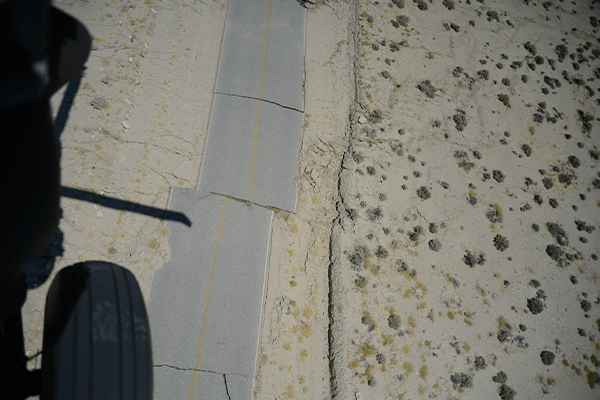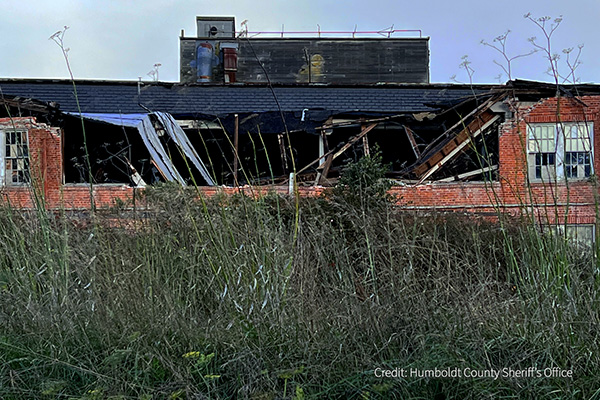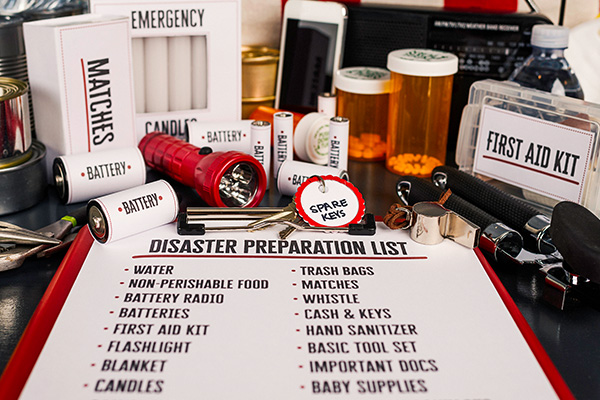Are Earthquakes Predictable?
Renowned earthquake expert Dr. Lucy Jones tweeted recently that she is often asked, “Will we have a big earthquake in 2022? The question I’m always asked, why I can give good probabilities, but not a yes or no answer.”
For earthquake scientists like Dr. Jones, the one-word answer to the question is “no!” Neither the United States Geological Survey (USGS) nor any other scientists have accurately predicted a major earthquake. And scientists do not expect to be able to predict earthquakes in the future. However, USGS scientists can calculate the probability that a significant earthquake will occur in a specific area within a certain number of years.
Considering there are about 15,700 known faults in California (with more than 500 of them categorized as active), and with most Californians living within 30 miles of an active fault, no one in the Golden State is risk-free when it comes to earthquakes. Scientists agree that there is more than a 99 percent chance of one or more major earthquakes striking California in the next 30 years.*
Problems with Earthquake Predictions
Because of their devastating potential, there is much interest in being able to predict the location and time of large earthquakes and earthquake likelihood. Although information is known about where earthquakes are likely, there currently is no reliable way to predict the day or month when an earthquake will occur in any specific location. The USGS National Seismic Hazards Mapping project provides an online web tool for determining the probability of a large earthquake within 31 miles of a specific location in the United States over a certain period of time. The calculation is based on the latest available information from seismic hazard data.
The tool, which includes an earthquake probability calculator, can be found on the USGS site.
Is there any progress on earthquake forecasting?
Earthquake forecasting is a popular topic of geological research. Geoscientists can identify areas of risk and, if there is sufficient information, they can make probabilistic forecasts about an earthquake likelihood happening in a specified area over a specified period. These earthquake forecasts are based on data gathered through seismic monitoring networks, geological field work, and from historical records. Long term earthquake forecasts are more reliable than short to medium term forecasts.
Does California know when the next earthquake will occur?
While we don’t know exactly when the next major earthquake in California will occur, scientists have come up with many earthquake probability scenarios.
Recently, the USGS predicted a 93% chance of one or more magnitude 6.7 or greater earthquakes striking Southern California, based on a 30-year period, beginning in 2014.
When it comes to highly populated Northern California, scientists estimate there is a nearly 3 out of 4 chance of one or more magnitude 6.7 or greater earthquakes striking the San Francisco region in the near future.
On the subject of earthquake probability in the Bay Area, the HayWired earthquake scenario, led by USGS, anticipates the impacts of a hypothetical magnitude 7.0 earthquake on the Hayward fault, which runs along the east side of California’s San Francisco Bay. In San Jose, several major fault zones intersect the city and nearby communities and the USGS earthquake probability map raises the risk of earthquake damage in San Jose and the South Bay communities.
The inability to predict earthquakes in Southern California is no different from Northern California or any other area of the Golden State. Many remember being unexpectedly woken up by the magnitude 6.7 earthquake that struck near Northridge in 1994, killing 58 people, injuring more than 9,000 and causing more than $49 billion in economic loss. This was caused primarily by the Northridge Thrust fault zone, which triggered activity in several other fault zones.
And July 4th holiday weekend revelers were not expecting to be jolted by the back-to-back, 2019 Ridgecrest earthquakes in the Mojave Desert—the biggest shakers in California in more than 20 years. A USGS report suggested they involved as many as five fault zones, including the Owens Valley fault zone, Panamint Valley fault zone, Garlock fault zone, Blackwater fault zone, and San Andreas fault zone. The first Ridgecrest shaker was a magnitude 6.4 on July 4th and the second one, a magnitude 7.1, struck on July 5th.
Even more recent evidence regarding the unpredictability of earthquakes occurred in December 2021 when a magnitude 6.2 shaker, called the Ferndale Earthquake, struck in far Northern California about 45 miles from Eureka. As with all previous earthquakes, the Ferndale quake was not predicted by scientists, proving once again that no one knows exactly when or where the next earthquake will occur.
Can animals sense or predict earthquakes?
While nobody can reliably predict when and where an earthquake will occur, eyewitnesses have reported that animal behavior is often unusual before an earthquake. For example, there have been reports that wild animals leave their sleeping and nesting places immediately before strong quakes and that pets become restless. It remains unclear how animals can possibly sense impending earthquakes.
However, these anecdotal accounts often do not stand up to scientific scrutiny because the definition of unusual animal behavior often is too unclear and the observation period too short. With all that said, one begins to wonder if some animals do have a sixth sense when it comes to anticipating the pending occurrence of an earthquake.
Why can’t we predict earthquakes?
While it would be helpful to get a signal or warning that an earthquake is occurring, there is no reliable method to indicate this, as David Bressan points out in an article he wrote in Forbes.
An earthquake is generated by a sudden rupture of rocks in the underground, miles below the surface of the Earth. They vary in their magnitude and duration, lasting from seconds to minutes. As described by Sciencing, “Tectonic earthquakes occur at plate tectonic boundaries. Tectonic plates are constantly moving slowly, but sometimes friction between them causes them to lock together and become unable to move. The rest of the plates carry on moving, which leads to increased pressure on the locked session. Eventually, the locked section succumbs to the pressure, and the plates move past each other rapidly. This movement causes a tectonic earthquake. The waves of released energy move through the Earth’s crust and cause the shaking we feel at an earthquake site.”
Research has shown that shaking from an earthquake displays a characteristic pattern. After the first tremors start—building up in intensity—a peak is reached, followed by a fading of the shaking. Large and small earthquakes start the same way.
What is the next best thing we can do?
Strengthening your house with a seismic retrofit is a good way to help prevent costly earthquake damage. It can provide peace of mind, knowing that you have helped your family better withstand an earthquake by strengthening where you live. The retrofitting process itself can be straightforward and often not as intrusive as homeowners might think. Depending on the type of retrofit needed, the work usually can be done in a few days and homeowners can remain inside their dwelling because, in almost all instances, workers do the retrofitting without entering the residence.
If your house is older, odds are it may need to be seismically retrofitted to have a better chance to withstand earthquake damage.
Earthquake Early Warning System
Californians have a tool called ShakeAlert that can give them an early warning about an impending earthquake. It is not a predictor of earthquakes, but a ShakeAlert message indicates that an earthquake has begun, and shaking is imminent.
According to the ShakeAlert website, the USGS—along with a coalition of state and university partners—developed and championed ShakeAlert for use in hospitals, transportation systems and educational settings. ShakeAlert uses technology to quickly detect the arrival of an earthquake. The ShakeAlert system can help to identify and characterize an earthquake a few seconds after it begins, calculate the likely intensity of ground shaking that will result, and make alerts available to people in harm’s way.
In California, a free app called MyShake uses information from the USGS to provide Californians with a warning seconds before a strong quake hits. According to the Governor’s Office of Emergency Services (Cal OES), it is part of Earthquake Warning California, and its website says it uses ground motion sensors to detect earthquakes before humans can feel them. The amount of advance notice received varies depending on the phone’s proximity to the earthquake epicenter.
What is your earthquake risk?
While scientists say there is more than a 99 percent chance of at least one magnitude 6.7 or greater earthquakes occurring over a 30-year period in the Golden State, the specific risk you face from a major earthquake is based on what part of the state you live in. "You can find out about major faults in your area by checking out the USGS's interactive fault map.
Based on earthquake probabilities, it is not a matter of if, but when, the next big one will rattle a region of California. So why not be better prepared to protect your family, your home and your future by strengthening your home against earthquake damage today!
There are ways you can protect your home and your family in the event of a major earthquake. Learn more at our blog on Essential Earthquake Safety Tips at Home.
And, if you live in California and your house was built before 1980, earthquake experts say your dwelling is especially vulnerable to damage from earthquake shaking because it was built before modern seismic building codes were put in place. The frames of hundreds of thousands of these type homes are not bolted to their foundations. And without adequate bracing (when needed) and bolting, these houses can slide or topple off their foundation during an earthquake.
For many California homeowners, the value of their property and the equity they have in it represent the majority of their savings and retirement nest egg. A seismic retrofit can significantly reduce the chances of an older home falling or sliding completely off its foundation—perhaps resulting in a total loss, even in a moderate earthquake.
Learn more about retrofitting for your house type at our Strengthen Your House page.
*This earthquake likelihood of a magnitude 6.7 or greater is based on a 30-year period, beginning in 2014.





